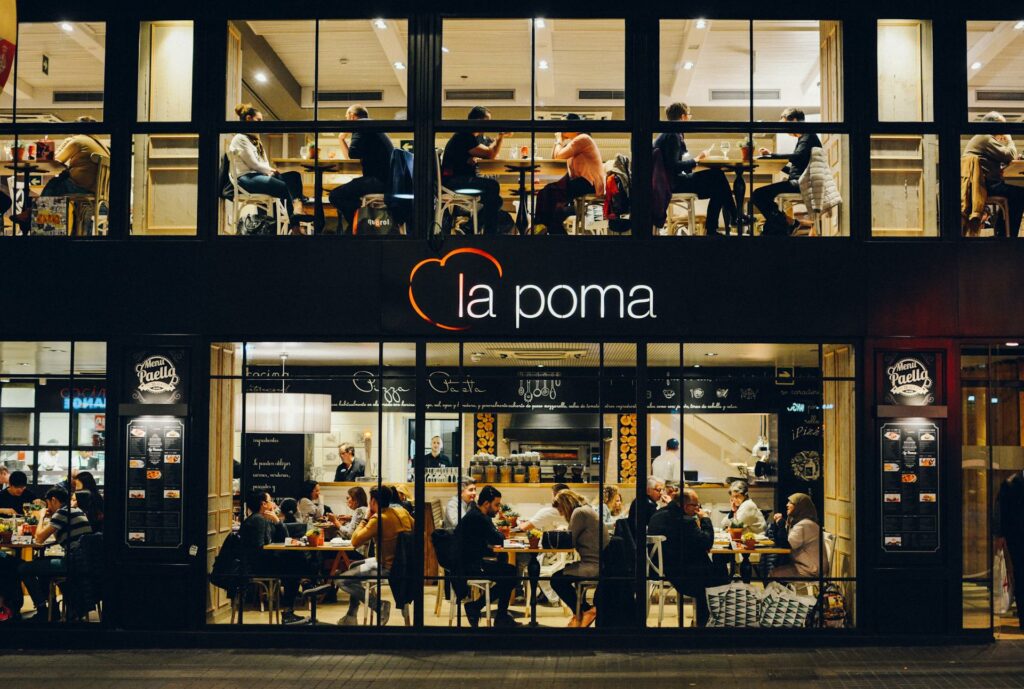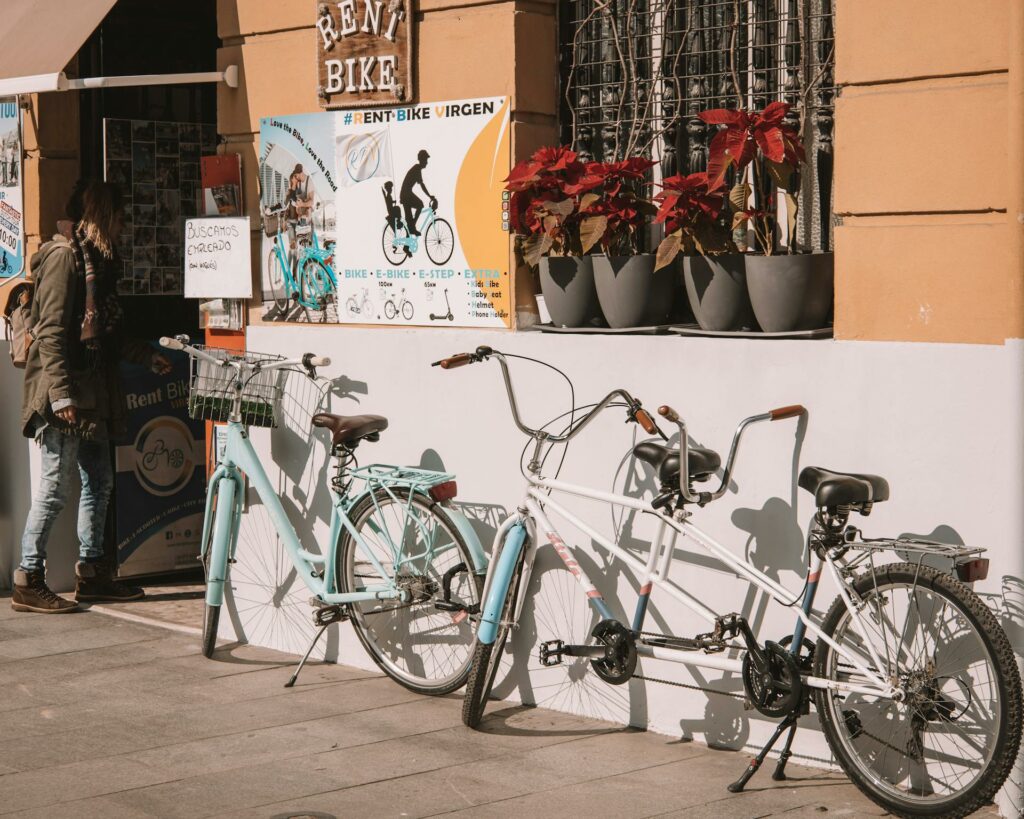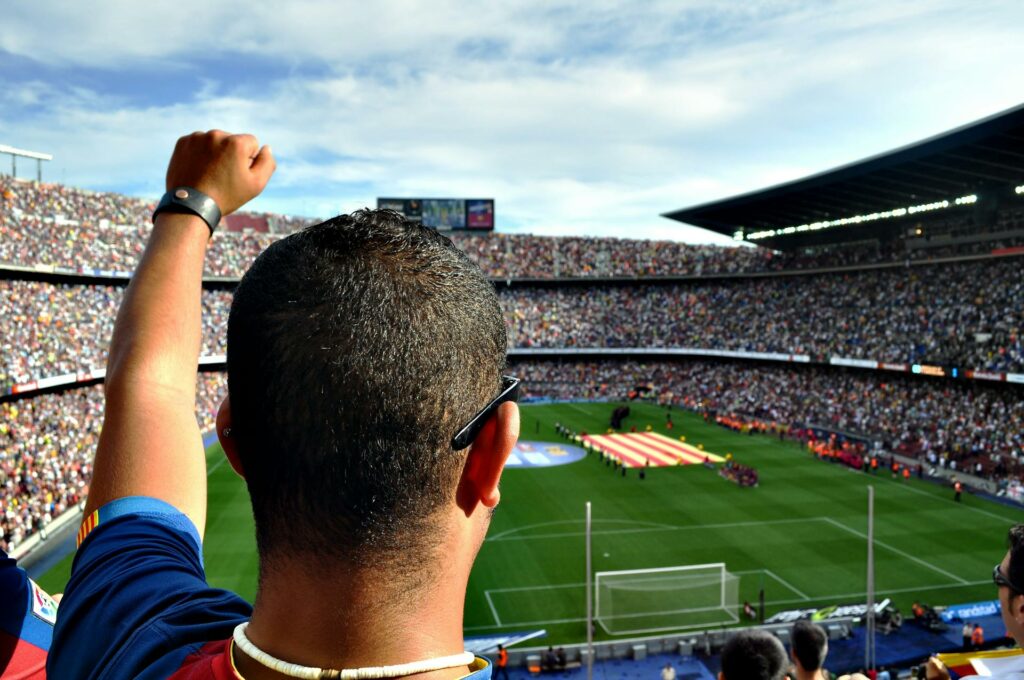What It’s Really Like to Live in Spain as an American
Thinking about teaching English in Spain? It’s not just about the language — it’s a total lifestyle upgrade. From late-night dinners to chill work vibes, living in Spain flips a lot of your American routines upside down (in the best way).
Culture is defined as “the way of life, especially the general customs and beliefs, of a particular group of people at a particular time” (Cambridge Dictionary). And when it comes to Spain vs. the U.S., those customs and beliefs look pretty different.
For starters, the United States is 19 times larger than Spain, with a population nearly six times greater. That means tons of subcultures in both places — but in this post, we’re focusing on general lifestyle differences you’ll experience when you move abroad.
Because here’s the best part: living in a new country means you don’t just see a different culture — you get to live it.
1. “Work to Live,” Not Live to Work
In Spain, the vibe is clear: life > work. Sure, people take their jobs seriously — but they don’t let it define them. Long lunches, real weekends, and Sunday’s with closed shops are all part of a built-in reminder to slow down. The U.S., in contrast, tends to lean hustle culture, where being busy is a badge of honor.
Take coffee, for example. In the U.S., you’re grabbing it to-go, maybe through a drive-thru, sipping between red lights. In Spain? Coffee is a social ritual. Colleagues head to a local café, sit down, chat, and don’t rush. It’s about connection — not caffeine efficiency.
That slower pace has a flip side, though. When it comes to things like paperwork, banking, or government processes, don’t expect speed. Bureaucracy in Spain can test your patience — but that’s part of the “slow down” living charm.
According to OECD data, Spaniards work fewer hours on average than Americans — yet report higher life satisfaction scores. It’s not lazy — it’s intentional.
Plus, Spain ranks near the top in the Global Life-Work Balance Index, while the U.S. lags behind major countries. Globally, workers rate life balance above pay—especially Gen Z, who prioritizes tiem as much as income.
2. Meal Times That Break the Rules

Forget lunch at noon and dinner at 6pm—Spain runs on a different clock. And once you embrace it, meals become social magic, not just fuel.
- Lunch (“la comida”) → 2-3pm — often the day’s main meal, with a menú del día served until late afternoon (The Spruce Eats).
- Dinner (“la cena”) → 9-10:30pm, sometimes even later—as you’ll quickly learn living in a city that starts its nightlife after dark.
Why so late? Here’s the story:
In 1940, Spain switched to Central European Time (CET to match Franco’s allies), even though geographically it belongs in the Greenwich Mean zone. That one-hour shift pushed every part of the day—including meals and TV—an hour later. Even after decades, the schedule hasn’t shifted back.
Why it matters as a teacher:
- Expect students back in the class in early evening after long lunches.
- If you want tapas after work, plan for evenings—not immediately after school.
Plus, breakfast routines rely on quick in-café eats like tostadas (toast with jam, olive oil, or ham)— usually €2–4 at local cafés. That price is a steal compared to American drive-through buys!
“Understanding Spain’s daytime eating rituals helps explain why dinner happens so late—dinner starts after 9 PM, and restaurants often open closer to 8 than 6.” — Take Walks travel blog.
3. Siesta Culture is Real (But Evolving)

Yes, the iconic siesta break still exists — although not everywhere. In smaller towns and traditional businesses, you’ll find shops and offices closing from around 2 to 5 PM, giving everyone a built-in recharge. In bigger cities like Madrid or Barcelona, things run a bit more fluidly—but the spirit persists in slower lunch hours and a more relaxed pace mid-day.
From a health perspective, research bears out the benefits of the mid-day siesta. From a study published in the medical journal Sleep Medicine:
“It is well established that in addition to reducing sleepiness, mid-day naps offer a variety of benefits: memory consolidation, preparation for subsequent learning, executive functioning enhancement, and a boost in emotional stability. These benefits are present even if a sufficient amount of sleep is obtained during the night prior.”
How it Works:
- It’s common to head home or grab a bite at your favorite café around 3 PM.
- Lunch is effectively a main event — think starter + entrée + desert.
- Then comes a mid-afternoon snack called merienda around 5 PM — perfect for bridging the gap to the big dinner at 9 PM or later.
Fun Fact:
A descent menú del día—usually starter, main course, dessert, and a drink—costs around €10–12 ($11.70-$14.04), and yes, typically includes a glass of local wine (The Spruce Eats). It’s one of those things that makes Spanish life feel rich — often more than that saving from your tight budget!
As a teacher, that means you’ll feel the rhythm of Spain in your daily routine:
- A slower pace midday
- A cultural snack reset (merienda) built into your day
- A post-lesson window that fits perfectly with tapas or a night out
Tipping & Service Culture
The service vibe in Spain is more “here when you need it”—not hover-level attentive. Tipping is optional (5-10%) for good service. There’s not tipping pressure like in the U.S., and many people leave loose change or skip it entirely.
4. Personal Space = Shared Vibes
In Spain, connections happen close-up. Forget back-up-off personal bubbles—here, people give hugs, pecks on the cheek, and stay tight during conversations. It may feel intense, but it’s all about building trust and closeness.
In fact, Spaniards are some of the most tactile and expressive people in Europe—hands up while talking, eyebrows raised, bodies leaning in. This cultural warmth can take a second to get used to if you’re more used ot American personal space norms.
Why It Matters for You
- Classroom tips: expect closer student proximity and more physical interaction (like patting someone on the shoulder).
- Chats with locals might feel deep and fast—so be ready to feel seen and related to.
5. Spanish = High-Context Communication
In simple terms: in the U.S., people say what they mean. In Spain, it’s more about how you say it—and where it’s said. These soft cues—body language, tone, timing—carry major weight in conversations.
How that plays out:
- You’ll notice Spaniards use gestures, facial expressions, and tone shifts to add meaning—sometimes more than words themselves.
- Rhythm and context matter: short pauses, shared glances, and tone changes can signal agreement or disagreement.
- In contrast, Americans often prefer precise language and direct feedback—even in group settings.
Why it matters as a teacher:
- Your cues matter: a gentle tone or unspoken message can help students understand your empathy.
- Over time, you’ll deepen your communication—not just what you say, but how you say it.
- Misinterpretation happens when context is ignored. So pay attention to the vibe.
“In high—context cultures like Spain, meaning lives in the setting, not just the words—nonverbal signals, emotion, and who you’re talking to shapes the message.”
Cultural Guide from Pitt Business To The World
6. Public Transport & Walkable Life

In Spain, you’ll rarely rely on a car unless you’re road-tripping the countryside. Cities in Spain are built for walking, biking, and easy public transport — a total vibe change from most parts of the U.S.
What That Looks Like
- Massive train networks and metro systems connect cities, suburbs, and rural towns.
- No more stressing over gas prices or rush-hour gridlock — just hop on a train or bus.
- Cities designed so you can walk to groceries, cafés, and public transport in minutes.
Public opinion backs it: Reddit users often rate Spain’s public transport far higher than the U.S. — “Overall, Spain probably has the best public transport…then England…then the US.”
Pedestrian Paradise
Many Spanish cities — like Madrid, Barcelona, and Seville — are what urban planners call 15-minute cities, meaning you can access everything you need within a 15-minute walk or bike ride. Some places, like Pontevedra, even have pedestrian-only zones, making it feel more sustainable and sociable.
Why This Matters for You
- No car = less stress + more savings
- Walkable cities = healthier habits + spontaneous exploration
- No matter your placement, easy travel means weekend trips are actually easy
7. Dining Culture = Community Time

In Spain, meals aren’t just about eating — they’re about connecting. The cultural ritual known as sobremesa takes food to another level: it’s the deliberate pause after a meal when you linger, laugh, and vibe with friends or family.
How it usually happens:
- After your meal—whether lunch or dinner—you won’t rush to leave.
- Instead, you chat, share stories, or sip a drink (wine, tea, or coffee)—sometimes for an extra hour or more.
- In Spain, the check won’t even come until you ask for it—it’s that sacred.
And yes—tapas culture ties right into this. Instead of one big meal, friends gather over small shared plates (called raciones or tapas) and conversation flows as freely as the vino tinto. It’s casual, social, and very Spanish (Treehugger, Spanish Sabores).
“For Spaniards, how we eat is as important as what we eat…You won’t get a check until you ask for it.”
Treehugger on why sobremesa matters in Spanish food culture.
Why It’s Worth Slowing Down For
- It’s about real human connection in a screen-driven world.
- Tapas culture encourages shared experiences, not solo meals.
- It turns meals into memories, not just moments.
8. Fútbol Fever & Local Pride

In Spain, fútbol (soccer) isn’t just a sport—it’s a way of life. From casual pick-up games in the plaza to massive matches between Real Madrid and FC Barcelona, the passion runs deep. Whether you’re a di-hard fan or just in it for the vibes, you’ll feel the energy everywhere you go.
What You’ll Notice
- Schools, bars, and even small towns revolve around the La Liga schedule. Game nights? Streets clear out.
- Major cities each have their own fierce loyalty—Madridstas vs. Culers (Barcelona), Betis vs. Sevilla in Andalucía.
- Local pride is serious: it shows in flags on balconies, chants at games, and even in how people greet you.
“Spanish football culture is a vibrant tapestry woven from the threads of passion, tradition, and relentless pursuit of excellence”
Sports Blog Lower Block
9. Less Tipping, More Living
If you’ve ever worked service jobs in the U.S., the tipping culture is real — 20% is standard, and servers rely on it just to make a living. But in Spain? Tipping is more of a thank-you than a necessity.
How It Feels IRL
- Tipping isn’t expected. Leaving a euro or tow for great service is polite, but not mandatory.
- Servers earn a livable wage, so they’re not relying on your tip to survive.
- Service might feel a little more relaxed — don’t expect servers to check on you constantly or bring the bill unless you ask for it.
This difference can feel refreshing. You’re not calculating percentages or stressing about tipping at cafés, bars, or taxis. You can simply enjoy the experience without the unspoken social pressure.
Why It Changes Your Daily Rhythm
- Dining out becomes more casual and less transactional — more about the moment, not the math.
- You’ll just adjust to asking for the check when you’re ready (it won’t come automatically).
- It’s a subtle but powerful reminder: life in Spain moves slower, with less hustle, more living.
10. Holidays & National Identity = Big Feels
In Spain, holiday’s aren’t just days off — they’re a full-blown celebration of history, culture, and identity. Whether it’s a religious festival, a local sain’ts day, or a nationwide holiday, you’ll feel the energy shift in the streets.
What Makes It So Different
- Spain has more public holidays than the U.S., and they’re deeply tied to local pride. It’s not just about fireworks — it’s about identity.
- You’ll see entire towns shut down for weeklong festivals like Feria de Abril in Seville or La Tomatina in Bunol.
- Even small towns have their own patron saint celebrations, complete with parades, traditional dress, fireworks, and live music.
Living in Spain means you’ll not only get more breaks from work (hello, long weekends), but you’ll also get front-row seats to cultural events that bring the communities together. These are the moments when Spain’s passion for life really shines.
The Impact Beyond the Party
- More paid holidays + local celebrations = time to explore, travel, and reset.
- You’ll get to see culture in motion — not just in museums or history books.
- It’s a powerful reminder of how connected people are to place and tradition.
Come for the Culture, Stay for the Lifestyle
You’ll come to Spain for the teaching opportunity, but what will keep you hooked is the lifestyle — the food, the people, the rhythm of everyday life. With RVF International, you’ll get support, structure, and the freedom to explore every beautiful contradiction of Spanish culture.
Want to see how much the two cultures actually have in common? Explore the top similarities between Spain and the U.S.
Want to experience Spanish culture for yourself? Join the RVF International community and start your Spain journey today. Let’s get you there →

